In this blog, we’ll dive into the science behind storm damage, the long-term risks of neglecting repairs, and what you can do to protect your home and finances from the next round of extreme weather.
The Science Behind Storm Damage: What Happens to Your Roof?
Each type of storm brings its own set of risks, and understanding how your roof responds to these elements can help you stay ahead of costly repairs.
Tornadoes & Straight-Line Winds (Up to 110+ MPH)
Tornadoes and high winds can generate wind speeds of over 110 MPH, strong enough to rip shingles off your roof, loosen flashing, and even tear entire sections of a roof off.
- Suction Forces: When strong winds hit your home, they create a vacuum effect that can lift shingles or weaken your roof’s attachment to the structure.
- Flying Debris: Tornadoes and windstorms can turn tree branches, metal, and other objects into high-speed projectiles, puncturing roofing materials.
Fact: According to the National Weather Service, tornado-related damage costs Georgia homeowners an average of $12 million per year in repairs.
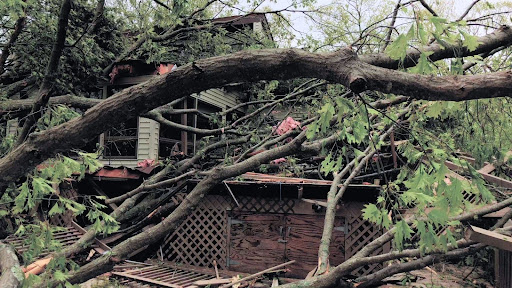
Heavy Rain & Flooding
Prolonged rainfall may not seem as damaging as a tornado, but over time, it can weaken your roof’s protective layers. Water infiltration can lead to:
- Roof deck rot, which weakens structural integrity.
- Mold and mildew growth, causing health hazards and expensive remediation.
- Ceiling stains and leaks, which indicate deeper damage that might not be immediately visible.
Fact: The Georgia Emergency Management Agency (GEMA) reports that storm-related water damage accounts for 29% of all home insurance claims in the state.
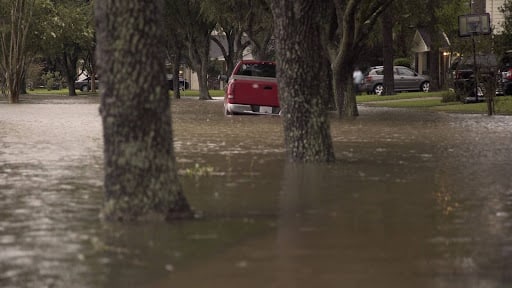
Hailstorms & Shingle Granule Loss
Hailstones, even as small as three-fourths of an inch in diameter, can cause significant damage to asphalt shingles by dislodging the protective granules that shield against UV rays and moisture.
- Hail Pitting: When hailstones strike, they create small dents and cracks, which accelerate the aging process of your shingles.
- Water Penetration: Once granules are knocked off, water begins to seep into the underlying materials, leading to rot.
Fact: Studies by the Insurance Institute for Business & Home Safety (IBHS) found that hail-damaged shingles age 40% faster than undamaged ones, meaning homes that experience even minor hail storms may need premature replacement.
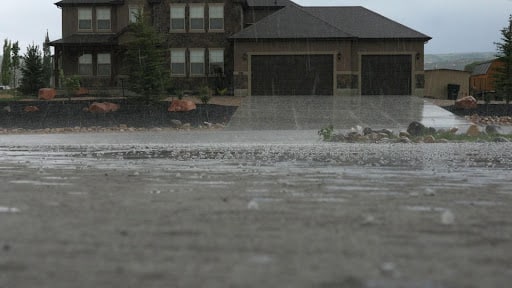
Falling Trees & Structural Damage
Downed trees are one of the most destructive side effects of severe weather. If a tree limb lands on your roof, the damage could range from a few missing shingles to a full roof collapse.
- Immediate inspection is crucial to determine if the structure has been compromised.
- Gutters can also be affected, causing water to back up under your roofing materials.
Fact: In Georgia, tree-related Roof Damage increases by 60% in spring and summer storms when the soil is loose from rainfall, making trees more likely to fall.
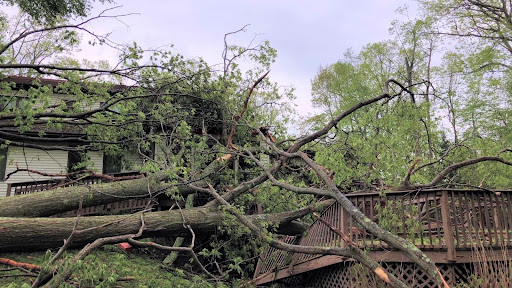
How to Identify Roof Damage After a Storm?
Even if your roof looks fine from the ground, storm damage isn’t always immediately obvious. Here’s what to check:
- Water stains or wet spots on ceilings or walls, which could indicate a slow, undetected leak.
- Missing, curling, or cracked shingles, which may have been compromised by wind or hail.
- Excessive granules in gutters, a red flag that your shingles are deteriorating.
- Dented or cracked flashing around vents and chimneys, where leaks often start.
- Tree branches or debris on the roof, which could signal structural damage.
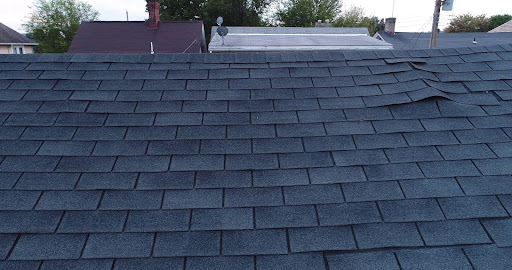
Why Ignoring Roof Damage Can Cost You More in the Long Run?
Many homeowners make the mistake of waiting too long to address storm damage, thinking it’s only a cosmetic issue. However, delaying repairs can lead to:
- Higher repair costs – Minor issues today can become expensive structural damage later.
- Voided warranties – Manufacturers may not honor warranties if damage isn’t fixed promptly.
- Insurance claim denials – Insurers might reject a claim if they determine that damage was “due to neglect.”
Fact: According to FEMA, 80% of severe weather-related home damage gets worse when repairs are delayed by more than six months.
What to Do If Your Roof Has Been Affected by Recent Georgia Storms?
If your area has been hit by recent severe weather, follow these steps:
- Inspect & Document the Damage – Take photos and videos for insurance purposes.
- Schedule a Professional Roof Inspection – A trained roofing contractor can assess structural integrity.
- File an Insurance Claim (If Needed) – Submit your documentation to your insurance provider as soon as possible.
- Get Repairs Done Quickly – The faster you act, the more you save in long-term costs.
Why Homeowners Trust Good Shepherd Roofing for Storm Repairs?
At Good Shepherd Roofing, we specialize in:
- Storm damage inspections (free for homeowners)
- Insurance claim assistance to maximize coverage
- High-quality, fast Roof Repairs and full Replacements
- Emergency response services for storm-hit homes
Fact: We’ve been named Best of Gwinnett five years in a row for a reason—our customers know they can Trust the Good Shepherd.

